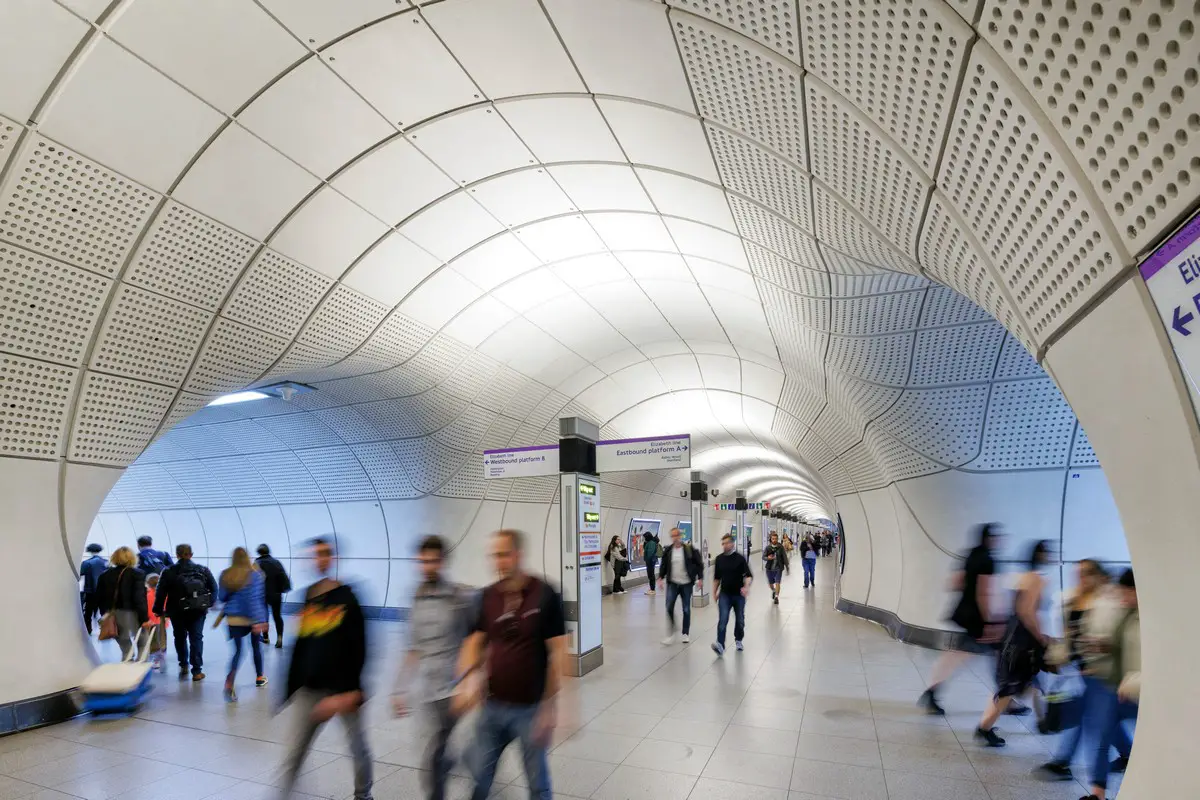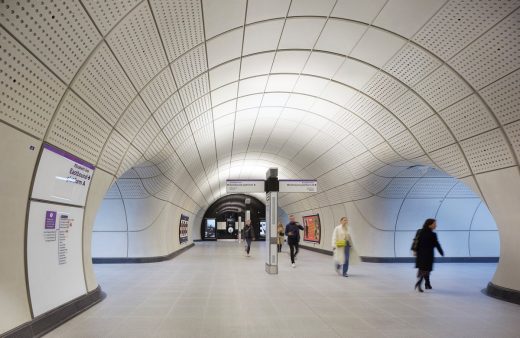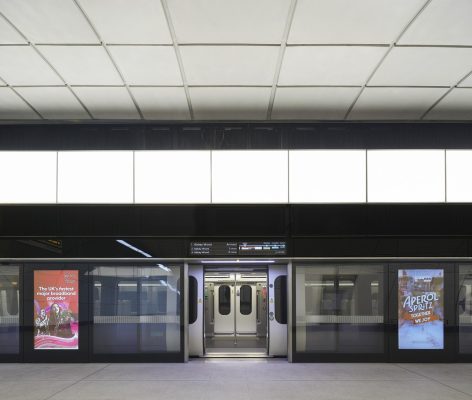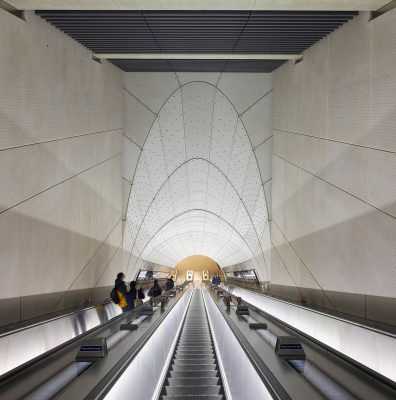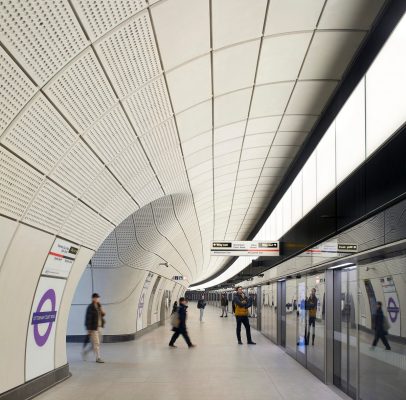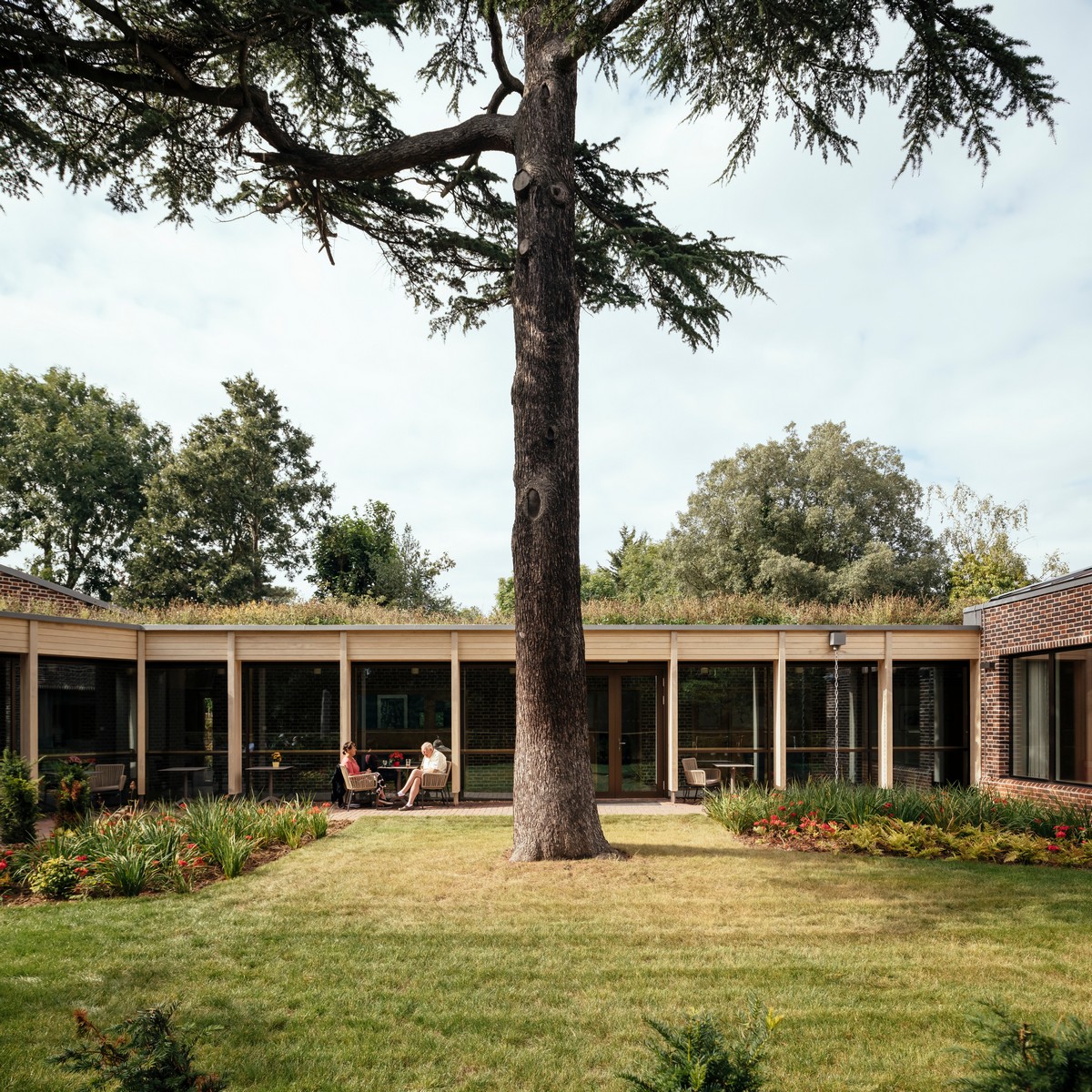Stirling Prize 2024 winner building + architects, UK architecture award design news
Stirling Prize 2024 Winner News
post updated 17 October 2024
RIBA Stirling Prize winner 2024: The Elizabeth Line
The Elizabeth Line – London’s new transport network – designed by Grimshaw, Maynard, Equation and AtkinsRéalis has been named as the winner of the 2024 RIBA Stirling Prize.
Stirling Prize 2024 winner
About The Elizabeth Line
The Elizabeth Line is the result of a remarkable collaboration between architects, engineers and designers. Together, Grimshaw, Maynard, Equation and AtkinsRéalis have designed a highly-inclusive, cohesive transport system that has already evidenced its social, environmental and economic value. By expanding capacity, reducing congestion, supporting Capital-wide regeneration, and creating employment opportunities – the Elizabeth Line continues to contribute to the city’s long-term growth.
Elizabeth line Tottenham Court Road station:
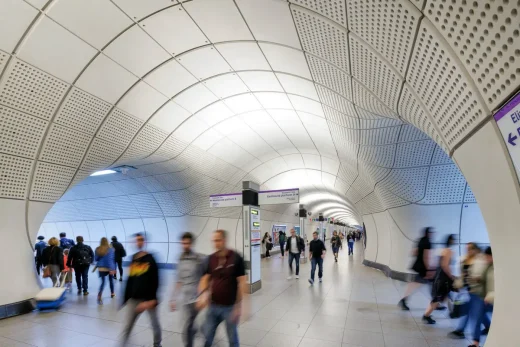
The winning scheme comprises platform architecture, passenger tunnels, escalators, station concourses, signage, furniture, fittings, finishes and supporting technology. The 10 new stations have each been designed separately.
Elizabeth line Liverpool Street station:
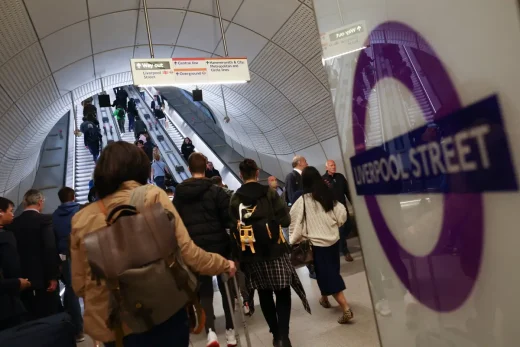
Neill McClements, Partner, Grimshaw, on behalf of the line wide design team including Grimshaw, Atkins Realis, Equation and Maynard, said:
“The Elizabeth Line is a piece of infrastructure that has been transformative, not only for London’s transport network but also for many people’s lives, highlighting the role design plays in elevating our every day.
Elizabeth line roundel at Paddington station:
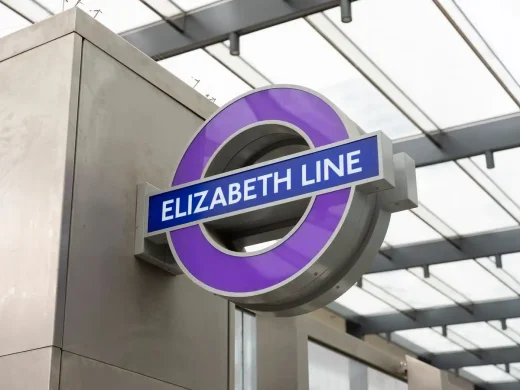
It is also a recognition of the challenges that our profession faces today – the responsibility we have to rapidly respond to the climate emergency, decarbonise our cities and prioritise social and economic equity. We know this is only achievable through collaboration and the Stirling Prize recognises all of the design and construction teams that have come together to make the project the success that it is.”
Eastern Ticket Hall entrance on Hanover Square, Elizabeth Line Bond Street Station:
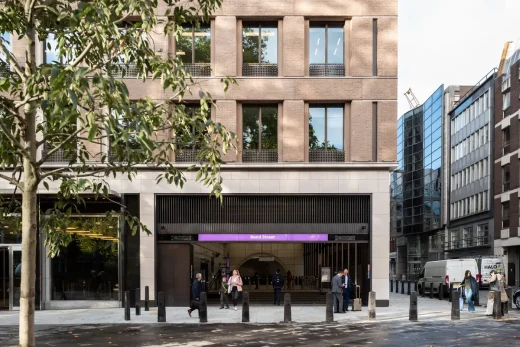
photo : John McAslan + Partners
Elizabeth Line London underground station buildings
+++
A short film, featuring the architect, is available to view here: The Elizabeth Line London.
London’s Elizabeth Line wins 2024 RIBA Stirling Prize for architecture
The Royal Institute of British Architects (RIBA) has named the Elizabeth Line – London’s new transport network – designed by Grimshaw, Maynard, Equation and AtkinsRéalis as the winner of the 2024 RIBA Stirling Prize. Presented since 1996, the prestigious annual award recognises the UK’s best new architecture.
Named in honour of Queen Elizabeth II, the Elizabeth Line runs from Reading and Heathrow to Essex and South East London. Accommodating 700,000 passengers every weekday and spanning 62 miles of track and 26 miles of tunnels, it is an extraordinarily complex architectural feat masked by an elegant simplicity.
The construction of the Elizabeth Line was a monumental achievement. The network navigates through centuries of untouched history buried deep beneath London, while carefully avoiding both new and ancient underground footings and sewage systems. The excavation project became part of Britain’s largest-ever archaeological dig, uncovering a wealth of historical artefacts – from a Tudor bowling ball to 55-million-year-old woolly mammoth remains. Six million tonnes of earth were excavated to create room for the network’s tunnels, which was repurposed to create a nature reserve in Essex.
In contrast to much of the old network, the Elizabeth Line provides a quietly calm environment. Its scheme-defining muted palette of perforated cladding, sensitive lighting and coherent wayfinding systems create an intuitive, frictionless experience.
Curvaceous, fluid lines converge and diverge, carefully guiding passengers to flow around corners, down cavernous vaulted tunnels and onto wide, open platforms. The lighting subtly shifts between warmer and cooler tones to highlight different levels and junctures, with a warm, softly-diffused band of indirect lighting spanning the platforms above the train doors and direct, cool lighting in smaller cross-passages.
The expansive tunnels and uncluttered double-length platforms – designed to accommodate full-size trains – feel generously spacious, while major features such as seating and freestanding ‘totem’ concourse signage made from screen-printed toughened glass are repeated from station-to station. The family of finishes give the whole network coherence, helping passengers to navigate the network with confidence.
The network is an exemplar of inclusive design, not only through the application of step-free access throughout, but through sensitive considerations to each sensory experience. Interventions such as hiding acoustic mats behind cladding to absorb excess noise, removing unnecessary fixtures and fittings and employing a restrained colour palette help to create a sense of calm for those who find underground travel overwhelming.
Environmental considerations help to future-proof the network and range from passive cooling at platform level to reduce the need for mechanical heating, to escalator motion sensors that minimise energy waste. Space has also been created for further air conditioning and temperature control, enabling the network to evolve with the challenges of climate change.
Speaking on behalf of the RIBA Stirling Prize jury, Muyiwa Oki, RIBA President and Jury Chair, said:
“The Elizabeth Line is a triumph in architect-led collaboration, offering a flawless, efficient, beautifully choreographed solution to inner-city transport.
It’s an uncluttered canvas that incorporates a slick suite of architectural components to create a consistent, line-wide identity – through which thousands of daily passengers navigate with ease.
Descending into the colossal network of tunnels feels like entering a portal to the future, where the typical commuter chaos is transformed into an effortless experience.
This is architecture of the digital age – a vast scheme that utilises cutting-edge technology to create distinctive spatial characteristics and experiences.
It rewrites the rules of accessible public transport, and sets a bold new standard for civic infrastructure, opening up the network and by extension, London, to everyone.”
Neill McClements, Partner, Grimshaw, on behalf of the line wide design team including Grimshaw, Atkins Realis, Equation and Maynard, said:
“The Elizabeth Line is a piece of infrastructure that has been transformative, not only for London’s transport network but also for many people’s lives, highlighting the role design plays in elevating our every day.
It is also a recognition of the challenges that our profession faces today – the responsibility we have to rapidly respond to the climate emergency, decarbonise our cities and prioritise social and economic equity.
We know this is only achievable through collaboration and the Stirling Prize recognises all of the design and construction teams that have come together to make the project the success that it is.”
The 2024 RIBA Stirling Prize Jury was chaired by Muyiwa Oki, RIBA President, with: Alex Ely, Founder Director of Mæ, winner of the 2023 RIBA Stirling Prize; Mary Duggan, Director of Mary Duggan Architects; Yana Peel, Global Head of Arts & Culture at Chanel (Lay Assessor); Minna Sunikka-Blank, Professor of Architecture and Environmental Policy at Cambridge University (Sustainability Consultant) and David Light, EMEA ECS Consulting Director at Autodesk, sponsor of the 2024 RIBA Stirling Prize;
The winner was announced at a ceremony on 16 October at London’s Roundhouse.
The ceremony also included the announcement of four RIBA Special Award-winning schemes:
- Croft 3 in the Isle of Mull by fardaa, winner of the 2024 RIBA Reinvention Award
- Wraxall Yard in Dorset by Clementie Blakemore Architects, winner of the 2024 Stephen Lawrence Prize
- Chowdhury Walk in Hackney by Al-Jawad Pike, winner of the 2024 Neave Brown Award for Housing
- Shakespeare North Trust and Knowsley Metropolitan Borough Council, winner of the 2024 Client of the Year Award for Shakespeare North in Prescot by Helm Architecture
Amy Bunszel, EVP of architecture, engineering, and construction solutions at Autodesk said:
“The projects recognised in the Stirling Prize never cease to amaze us and we’re thrilled to be supporting the award as the well-deserved winner is announced. Being able to celebrate the innovation and creativity that goes into the work of these firms is a great way to inspire the architects and projects of the future.”
+++
Following the announcement tonight that The Elizabeth Line has won the RIBA Stirling Prize 2024, AtkinsRéalis warmly congratulates the team effort behind the win:
The Elizabeth Line Comment by AtkinsRéalis
Declan O’Carroll, UK Architecture Leader AtkinsRéalis, said: “It is a huge honour to win the RIBA Stirling Prize, which is recognised globally as the pre-eminent award for design, for our part in the design and delivery of the Elizabeth Line.
“The Elizabeth Line represents a real step-change in the way London Underground stations have been evolved and sets a new exemplary 21st century standard. The entire interconnecting experience of the public has generous spaces and civic proportions, where it feels intuitive to move around for the passengers, and their experience has been prioritised.
“We are delighted to be recognised along with our collaborative partners Grimshaw, Maynard and Equation on this major infrastructure and architecture project, which is responsible for transforming millions of lives in London and surrounding areas.
“Projects such as this require a diverse range of skills and a collaborative partnership of creative talents to be brought together, and this has been an exemplary demonstration of that approach, creating a blueprint for future major infrastructure projects like this.”
Previously on e-architect:
31 July 2024
The Elizabeth Line, London Underground by Grimshaw, Maynard, Equation and Atkins
A transport tour de force: A mammoth feat of construction and collaboration, The Elizabeth Line creates a familiar yet significantly improved experience for the 200 million passengers it is expected to carry each year. A slick line-wide identity manifests at platform level though the application of consistent cladding, lighting, and signage, creating a decluttered and accessible environment. The result is a major infrastructure project that sets a new standard for inner-city transport.
The project team was organised into ‘station’ and ‘line-wide’ teams. The line-wide team was responsible for overall experience in areas below ground, encompassing concourses, tunnels, and platform environments. The main works packages included tunnel linings, platform edge screens, signage and wayfinding, flooring, lighting, seating, poster frames, fire equipment cabinets, handrails and balustrades, and communication equipment integration.
The ethos behind the component design was to rationalise and refine. Stakeholders were involved from an early stage and full-size prototypes were produced for performance testing. Passenger tunnels are lined with spray-painted, glass-reinforced concrete panels that are curved at tunnel intersections to minimise blind spots and improve flow. Through collaboration, the team were able to reduce the number of different tunnel diameters and components and improve the efficiency and complexity of the design.
The passenger experience feels significantly different from other tube lines. The Elizabeth Line’s spaces are decluttered and calm, and the acoustics feel appropriately muted. The overall material palette is limited, with concrete-lined walls, and glass and stainless steel to the platform edge screens and technological totems. Grouping the technology has also rationalised servicing, maintenance, and replacement.
Passenger wayfinding is key to the experience. Information has been cleverly ordered. Waiting for the train, the directions are clearly displayed only on the platform edge screen. Stepping off the train, you will find the guidance you need on the back wall of the tunnel, facing you. There are no other display distractions here.
As a vast infrastructure project, the Elizabeth Line defies most of the current metrics of the RIBA 2030 Climate Challenge. The initial whole life carbon assessment revealed that a huge amount of carbon would be used in the creation of the tunnels. (Almost 100% of excavated material was diverted from landfill and deposited at a nature reserve in Essex.) The 120 year lifespan of the project meant that much could be attributed to operational energy, far outweighing the embodied carbon created. This realigned the focus on the operation and maintenance of the scheme, with easily replaceable and accessible elements. Ultimately the team created their own benchmarks, which has resulted in this being one of the UK’s most sustainable infrastructure projects.
The UK’s best architecture – 2024 RIBA Stirling Prize shortlist
A London Underground line, national art gallery, Council-led housing, inclusive rural retreat and two major regeneration projects have been recognised by the Royal Institute of British Architects (RIBA), forming the shortlist for the 2024 RIBA Stirling Prize.
Stirling Prize 2024 Shortlisted Buildings
The other five projects that were in the running for the UK’s highest accolade in architecture were:
Chowdry Walk, London by Al-Jawad Pike
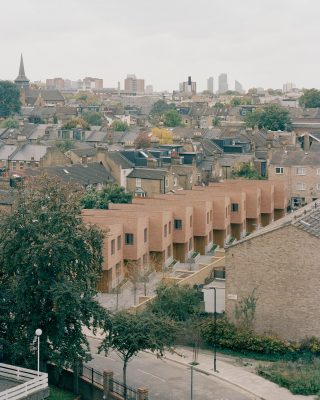
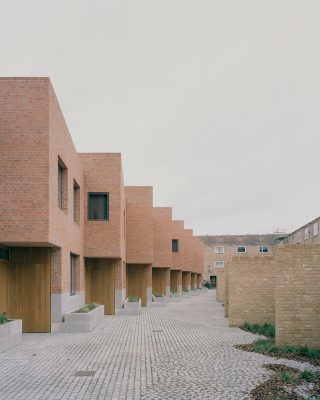
images by Rory Gardiner
King’s Cross Masterplan, London by Allies and Morrison and Porphyrios Associates
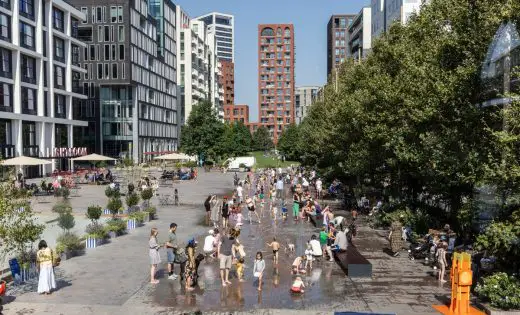
image by John Sturrock
National Portrait Gallery, London by Jamie Fobert Architects and Purcell
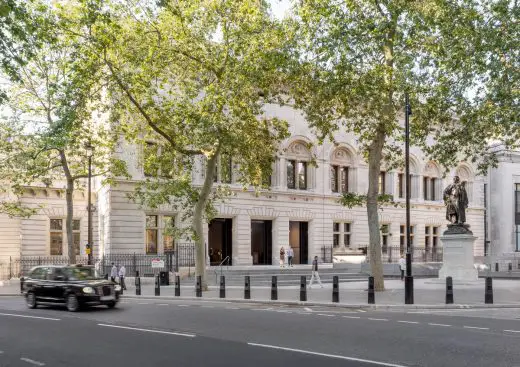
image by olivierhess.com
Park Hill Phase 2, Sheffield by Mikhail Riches
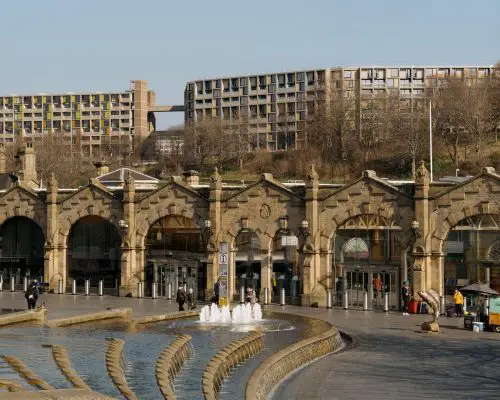
image by Tim Crocker
Wraxall Yard, Dorset by Clementine Blakemore Architects
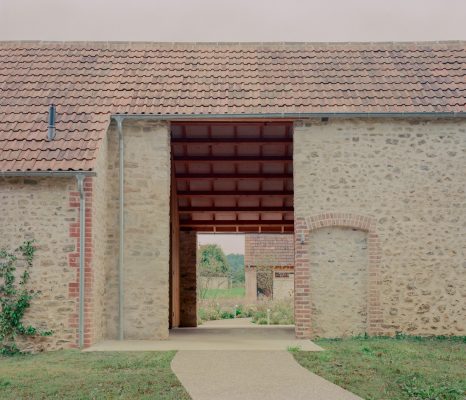
image by Lorenzo Zandri
Stirling Prize 2024 Shortlist: building + architects images / information received 310724
+++
Stirling Prize Winners
Stirling Prize 2021 Winner
Kingston University London – Town House
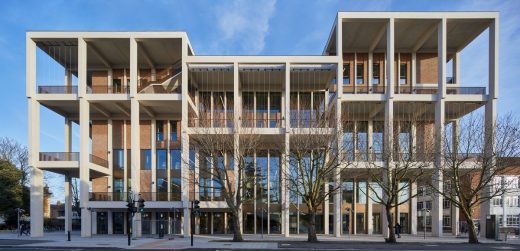
photo : Ed Reeve
Kingston University London Town House
Stirling Prize 2019 Winner
Goldsmith Street, an eco-friendly council estate in Norwich.
Design: Mikhail Riches
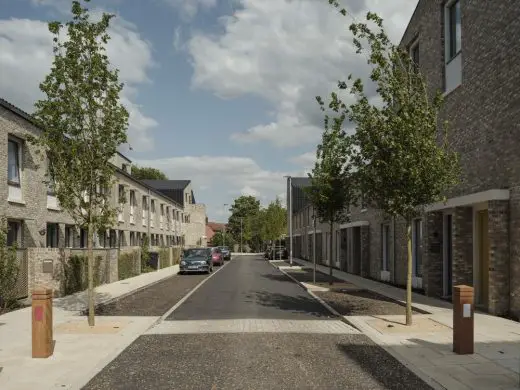
photograph © Tim Crocker
Goldsmith Street Housing in Norwich
Stirling Prize 2018 Winner
Bloomberg London Headquarters building design by British architects Foster + Partners:
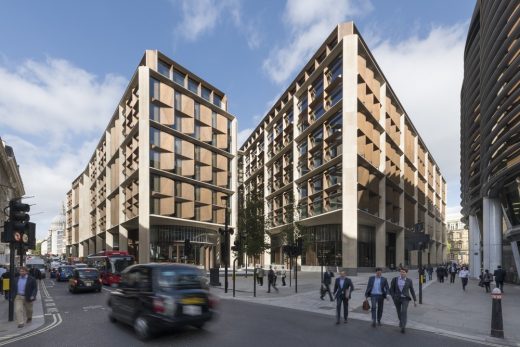
photo © Nigel Young / Foster + Partners
Bloomberg London HQ
Stirling Prize 2017 Winning Building + Architects
Hastings Pier, Sussex, Southeast England
Design: dRMM Architects
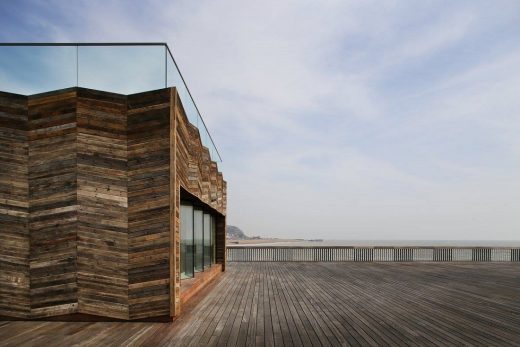
photo : Alex de Rijke
Hastings Pier on 2017 RIBA Stirling Prize Winner
Stirling Prize 2016 Buildings + Architects
2016 RIBA Stirling Prize Shortlist
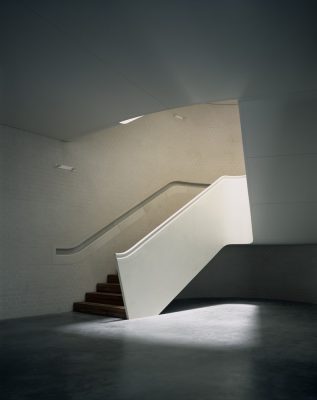
photo : Hélène Binet
, University of Oxford, England
Herzog & de Meuron
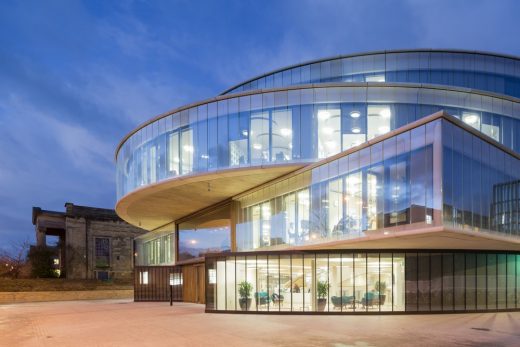
image : Iwan Baan
Blavatnik School of Government University of Oxford
Newport Street Gallery, Vauxhall, London, England
Caruso St John Architects
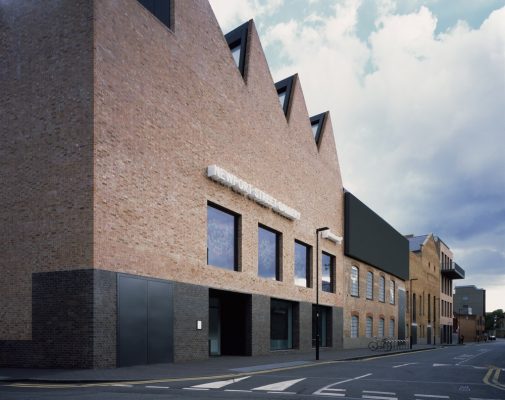
image : Hélène Binet
Newport Street Gallery Building
2013 RIBA Stirling Prize

photograph © Hélène Binet
Astley Castle, Nuneaton, Warwickshire by Witherford Watson Mann
Stirling Prize 2013 – judges citations
2012 RIBA Stirling Prize winner
The Sainsbury Laboratory, Cambridge
Stanton Williams
Sainsbury Laboratory was bookies second favourite (odds: 7/2)
Stirling Prize 2012 : further information on the shortlisted buildings
+++
RIBA Awards : contenders for the Stirling Prize
Stirling Prize Awards background on shortlist / buildings / architects / odds / favourite
Pritzker Prize architects – Architect Winners
Comments re Stirling Prize 2024 winner: building + architects news welcome.

